Garden Glimpses: Red October
Many gardeners bemoan the approach of autumn, as signaling the end of the growing season and the withdrawal of color from the landscape. But color is everywhere in October, from the vivid leaves in woody stretches to the farmstands overflowing with pumpkins and gourds in every conceivable shape, size and hue. The trick is bringing that amazing color into your backyard!
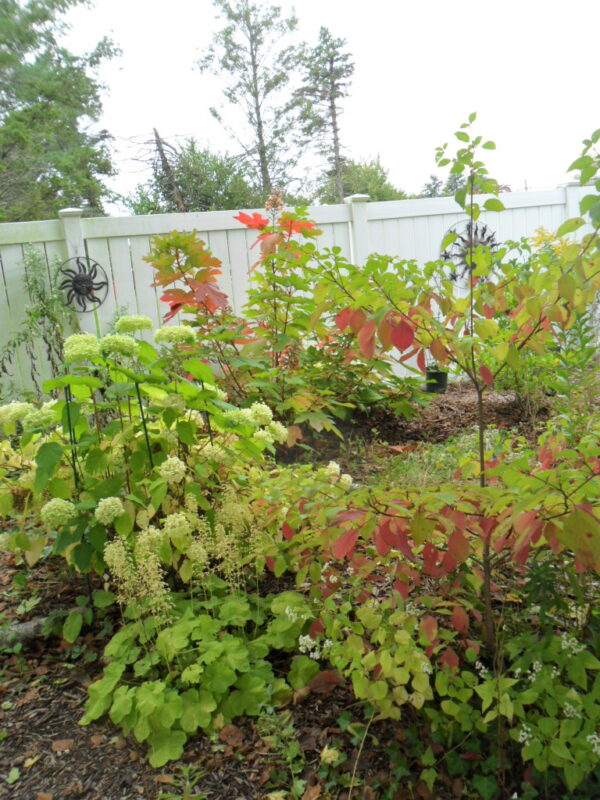
Fall color was one thing my parents didn’t account for, beyond the trees on the property, and many of these are checking out as they pass their expiration date. With the clump birches failing, and the black birch shedding its leaves starting in August and all but bare come October, all that’s left of what my parents bequeathed me for fall foliage is the Norway maple in the back and the Chinese dogwood in the front. Both are relatively late turners. As I write, the dogwood is just starting to color, but the maple won’t do so until November (it used to be a stunning golden yellow by Halloween, but as climate change deepens and our autumns warm, that date is creeping closer to Thanksgiving).

So it was up to me to fill the color gap, and now, some five years in, my choices are beginning to pay off. I couldn’t be more pleased with my cornus alternifolia, the Pagoda dogwood. I bought these in the fall of 2020, just tiny stick trees, but they have quickly filled in to more than my height, with several rafts of perpendicular branches in their typical layered style. It took them three years to bloom and fruit, and almost as long to show really good color, but we’re there now, and the show was worth the wait! My only complaint is again climate-related, and no fault of my dogwoods; the lack of an early frost, or at least cool nights, means that the trees don’t turn at once, but gradually, as chlorophyl recedes from tips to base, revealing the brilliant colors hidden by its green profusion. The positive effect of this is to extend the overall foliage season, but at the price of those dramatic sudden shifts, where the entire tree is ablaze at once.
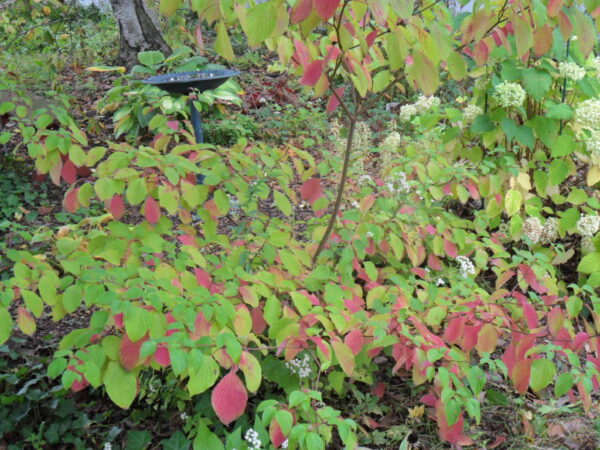
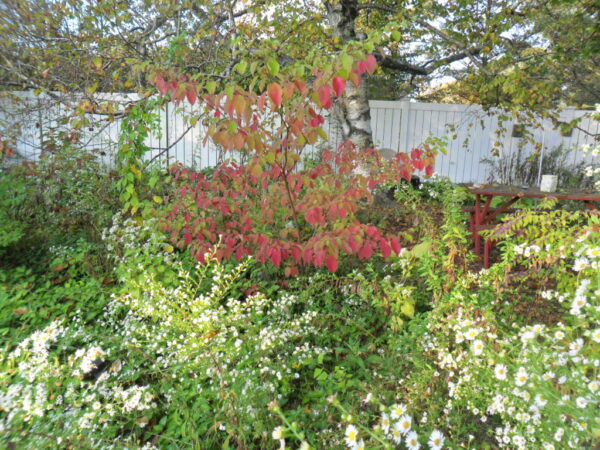
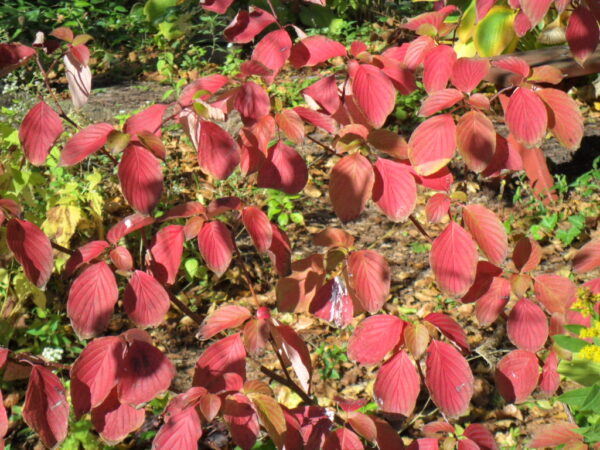
All my dogwoods have a range of fire tones in their fall foliage, but the Pagodas tend more toward the purple end of that spectrum, whereas the Chinese dogwood is hotter, with more oranges and yellows in the mix. Both are stunning at their peak.

The only other tree of any size which I have added is the witch hazel. Truth to tell, I’d prize this lovely lady just for the incredibly early, saffron-colored, spidery blooms, which start for me in February, when all else is bleak and barren. But its fall tones are a winner as well, with the ribbed, hatch-edged leaves alight in colors of yellow, orange and russet adding a much-needed pop of color to the east bed.
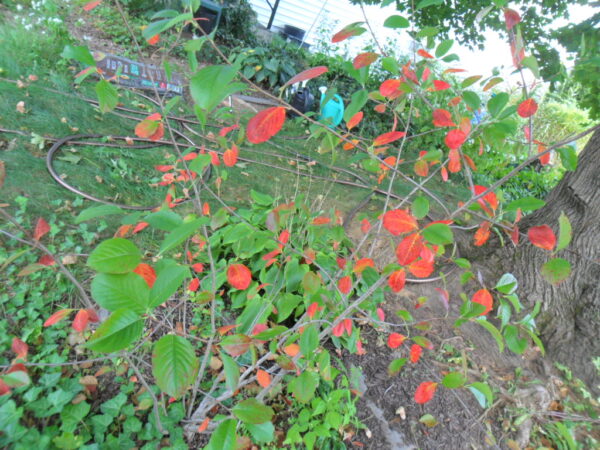

In addition to these, I stocked the garden with shrubs noted for fall interest, be it leaves or berries. The aronias, in particular, are vivid in their coloring. Commonly known as chokeberry, I have two varieties – nigra, a black-berried version, whose fruits ripen early in the season, and have long since been consumed by the birds; and brilliantissima, with red berries just coming into prominence now.
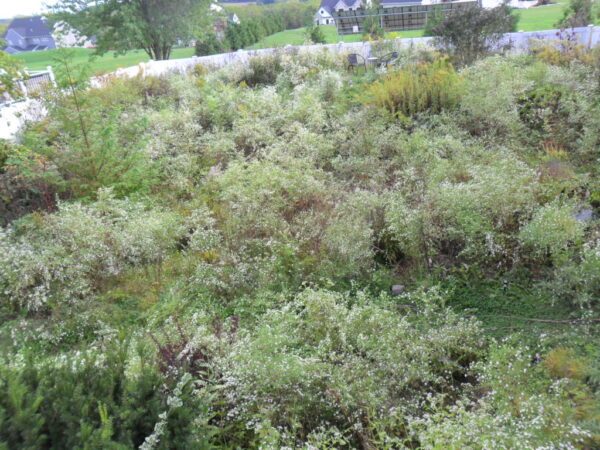
Both have had their issues. The red chokeberry, already leggy when I bought it, has never properly filled in below, and may require some major surgery after it goes dormant, essentially cutting it back to about two feet and hoping for the best. Its fall color is cherry-red, inclining toward burgundy. The black chokeberry has thrived, but likes more hydration than I can give it during droughts, being sited underneath the very water-greedy Norway maple. This means it starts to shed in August, but nevertheless colors first, with one brilliant red-orange leaf after another turning and dropping in succession, until by late September there is barely anything left to color in season. But this year I got lucky – we had an exceptionally wet August, keeping its foliage largely intact, and a cool but dry September, so I’ve experienced nigra in her autumn best for the first time ever!

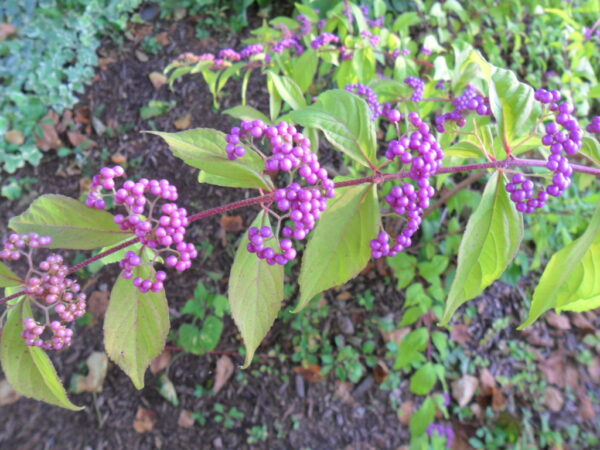
Callicarpa’s autumn foliage isn’t anything to write home about, a rather wan yellow, but the so-called American beautyberry more than makes up for this with its fruits! This aptly-named stunner is covered in clusters of small, impossibly bright neon-purple berries, which persist after the leaves have fallen. Callicarpa will stay fresh and vibrant through the holidays, and makes an excellent addition to indoor arrangements. It dims with age, eventually tuning dun brown by midwinter, but if cut at just the right time, some semblance of purple will remain in its dried form, for years to come. Not vibrant, to be sure, but still recognizably purple.
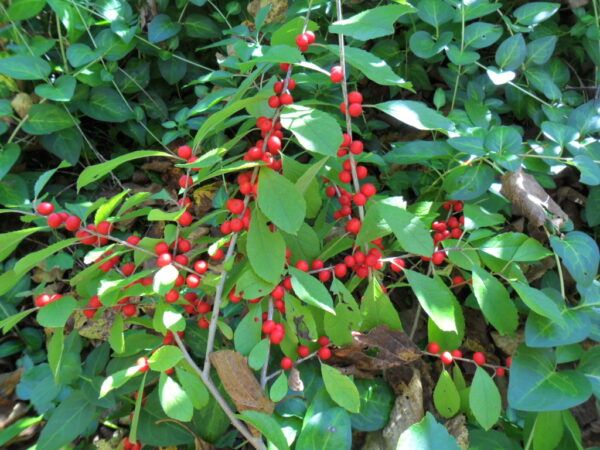
I’ve also been pleased this year with the progress on my Red Sprite winterberry, the ilex verticillata. This is a dwarf variety of holly, a deciduous species that drops its leaves in winter to showcase the brilliant red berries. Just three to four feet tall at maturity, mine were miniscule when planted in the fall of 2020, and have taken their own sweet time filling in. Last year, after a bumper crop of tiny green berries in the spring, I was dismayed to find that only a handful made it to maturity and colored, but this year the plants took off like a rocket and most of their berries persisted. The lead branches are in fact now approaching their three-foot anticipated height, though it will be years yet before they are fully realized. At this stage, the green foliage still clings, but the bright red berries are clearly visible amidst them.


Woody perennials were next on my list in the quest for fall color. In this regard, the oakleaf hydrangeas can’t be beat! Alice’s platter-sized leaves have been aglow for weeks, as she gradually sheds her summer apparel for a fall chemise. When she proffered fewer blooms this spring than the year before, I briefly considered trimming her back to encourage denser branching and more buds in future. But I decided to wait for her autumn foliage, and I’m so glad I did! Alice’s tones vary from a deep pinky-mauve to a scarlet so bright it’s almost blinding.
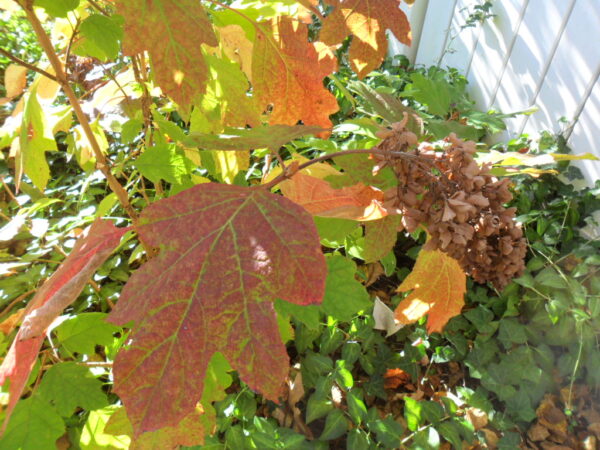
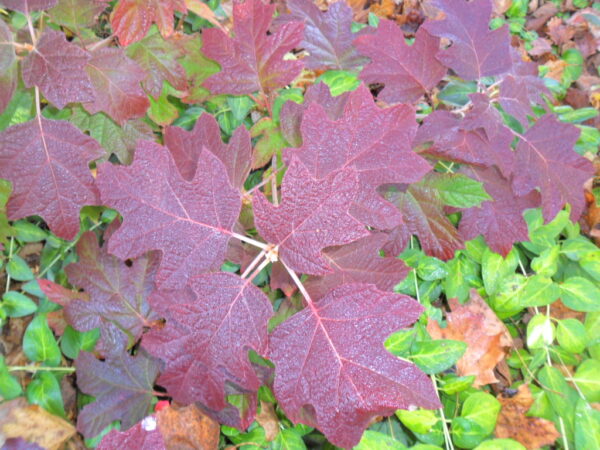

Snowflake is right behind her, tending more to yellow-orange and russet in its coloring. Its spent blooms, now deep brown, are also a visual plus. Pee Wee is just getting started, with lush, burgundy-brown foliage that persists so late in the season, I call her my “outdoor poinsettia,” still vibrant and glowing at Yule, when all other hydrangeas have shed their leaves. Queen of Hearts has grown to a prodigious size by the kitchen door stoop, but shows no signs yet of coloring. Anabelle, my only arborescens hydrangea, turns a pleasant yellow, but its blossoms are still showy, having turned from pastel mint to brilliant white and back to cream over the course of the growing season, before they dim to pale grey-tan by winter.
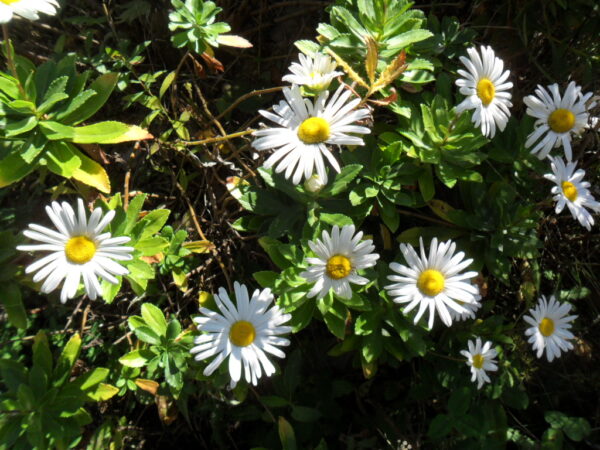
The last woody perennial I want to mention is notable not for foliage, but late bloom. Montauk Daisy sports large white, yellow-centered, daisy-like blooms, which don’t even think about opening until October is well underway. Some years, it waits for Halloween to reach peak, but we’re about there now, in the second week of the month.
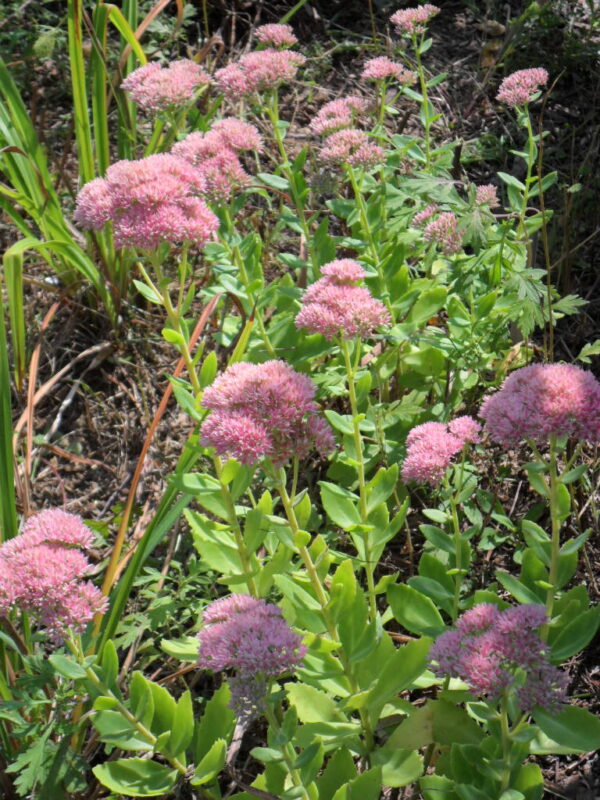

For blooming companions I have planted myself, Montauk only shares the stage with the sedums, which are ubiquitous on the property, in tones varying from palest pink to deep burgundy-mauve. These make excellent cut flowers as well, long-lasting and festive. I do have one solitary hardy chrysanthemum, a species I never have much luck with, as regards returning. Over the years I’ve tried several, and most are only good for the season they’re planted, but if I was only to have one survivor, this is the one I’d pick, with deep purple munchkin-sized blossoms on a huge barrel of a plant, almost a yard across.
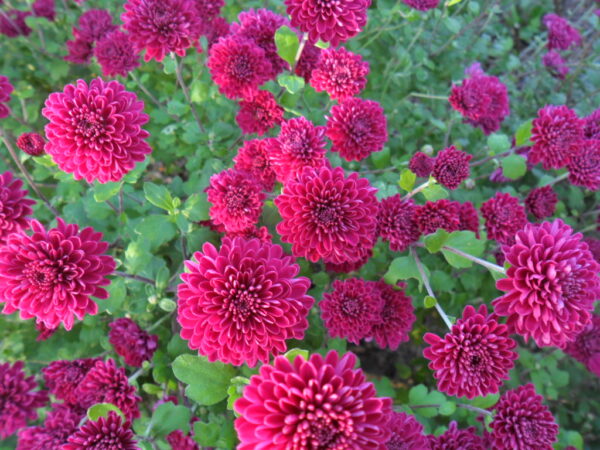
But autumn’s main stage is reserved for the natives, beginning first with amber goldenrods, then fuzzy white snakeroot, and closing the show with native asters. I have isolated (but not identified) at least four different varieties of native aster on the property, all self-sown, in tones from pastel pink and lavender to cream, white and a bright medium purple, which is the only species I’m certain of, the Michaelmas daisy. That plant also sowed itself, in a small bed out front by the garage door, the year I inherited the property, and still thrives there, but I’ve been at pains to take divisions for transplant into the garden proper, so it can propagate itself across the wider landscape.
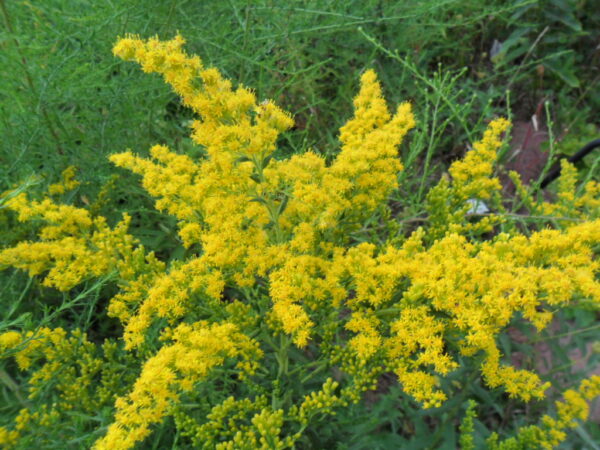

I never did get to editing the asters this summer, and they are now dominating the garden. Asters are a funny breed: deceptively slow to start, they spend the majority of the growing season looking like they won’t amount to much, but as August waxes they suddenly put on growth at speed, and by late September are filling every square inch of space, if left unchecked.

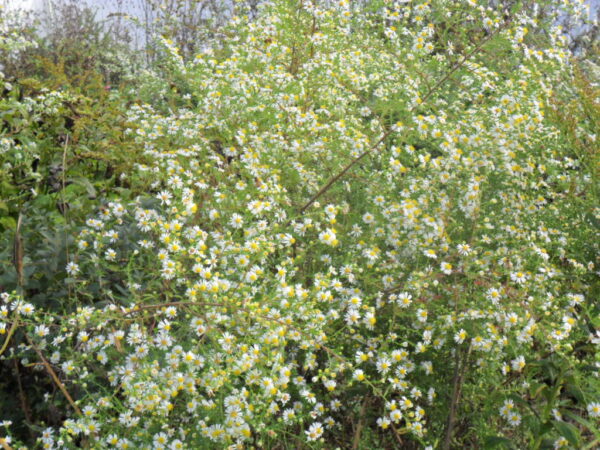

And unchecked is just how I left them, which means I’ve created quite a major cleanup issue for myself in late winter. But as I look across the garden now, simply covered in bloom at a time when many gardens are failing, I can’t really say I made a poor choice. Drift upon drift, layer upon layer, asters blanket the yard like a fresh snowfall.
This profusion of bloom has provided an unexpected auditory pleasure as well. As soon as I step out my door, I am aware of a low-grade humming buzz that permeates the garden. Bees and other pollinators have come to enjoy their last big feast before winter sets in. Hundreds, possibly thousands, of pollinators, all buzzing at once as they dart from bloom to bloom. I’m especially gratified to see so many honeybees, an endangered, but vital, species. These have been a rare sight on the property for decades, and I’m seeing them in numbers we haven’t witnessed here before.
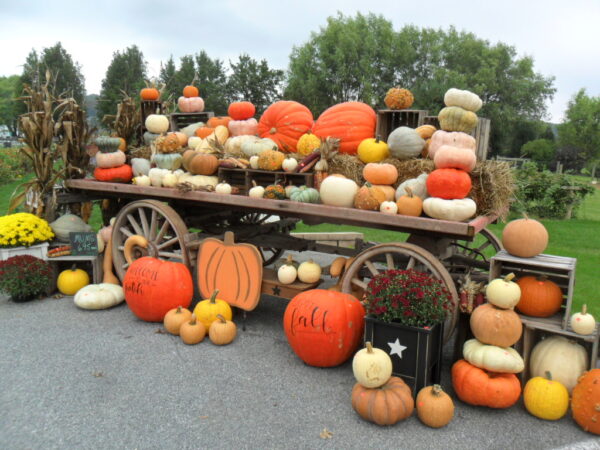

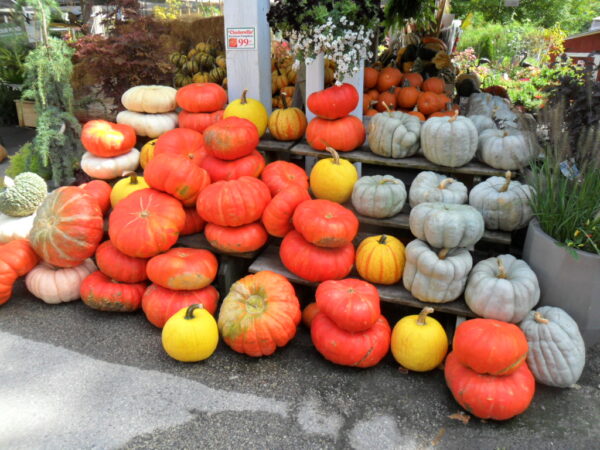
Of course, one can always supplement the garden color with seasonal imports, transitory markers of autumn. I always do a display of pumpkins and gourds by the garden gate, and this year was no exception (see cover photo for the latest iteration). The variety of shapes, colors and sizes available is just staggering, with something to suit any taste or color scheme. And picking and choosing them is almost as fun as displaying them later! I always choose some edible varieties for soups or roasting as the season deepens; Red Hubbard and the diminutive Honeynut squashes are my favorites for consumption. And the lovely thing about such beauties is that they are perfectly appropriate all season long, from the fall equinox through Halloween and right on to Thanksgiving!
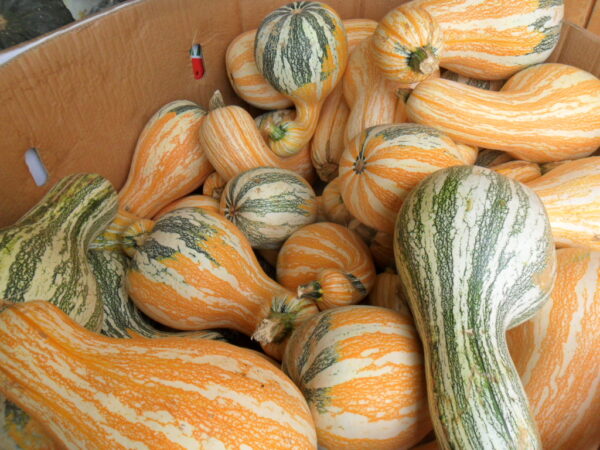
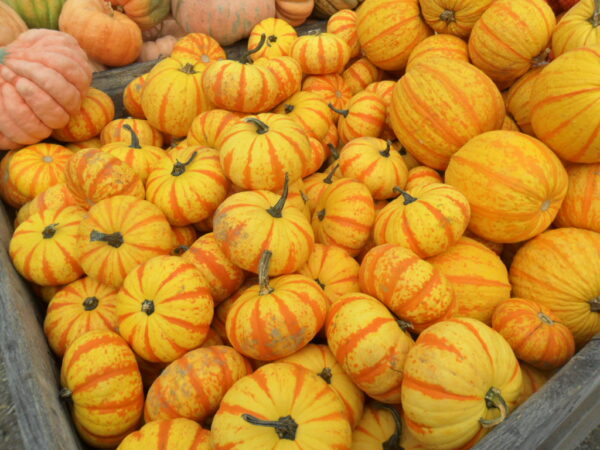

The joys of fall are many – vast vistas of vibrant forest foliage; crisp, cool nights and frosty mornings; skies of azure dotted with puffs of white cloud; fresh apple cider and pumpkin-flavored treats; trick-or-treat candy and spooky décor abounds. It’s my favorite season by far, and it’s finally here!
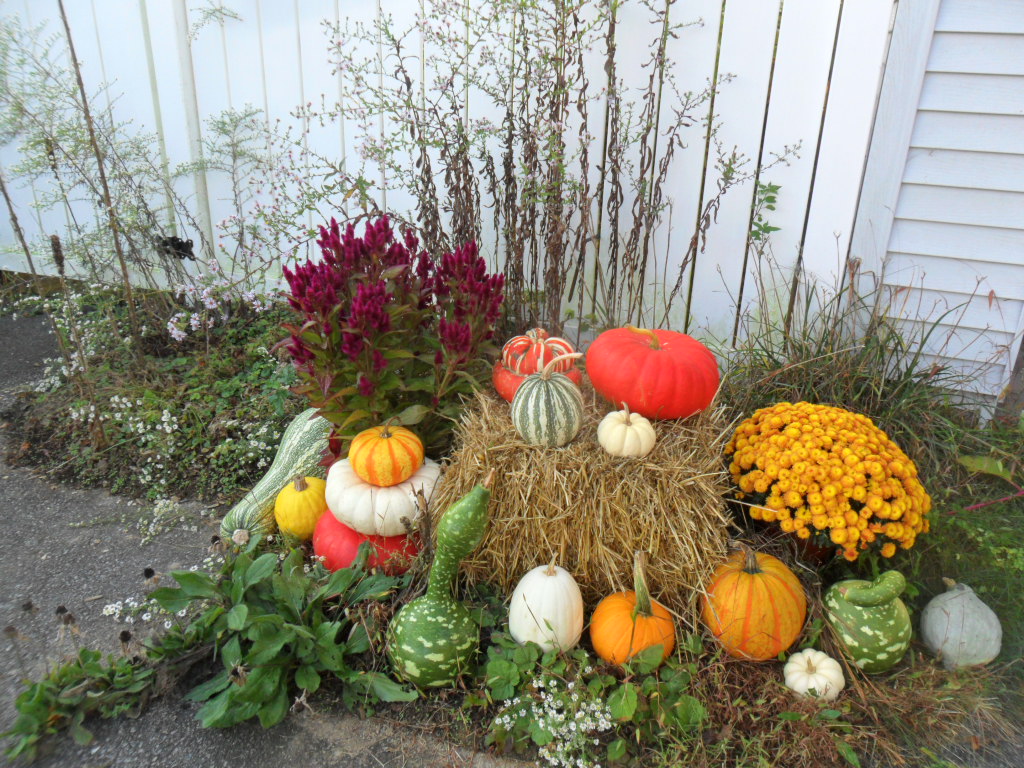

4 comments, add yours.
Marianne
So very beautiful!
Jen
Thank you for sharing! You have such a nice garden!
Laurien
Enjoyed this so much! Especially your gourd display and the beautyberries! It’s also wonderful to think of all the happy bees and other pollinators in your Aster Kingdom! Keep up the good work and thanks for sharing!
Charlotte
Your level of horticultural knowledge is quite stunning!
How lucky we are that you so generously share it – thank you once again.
Just LOVE all those beautiful pumpkins – now I feel like running off to go and cook me some…